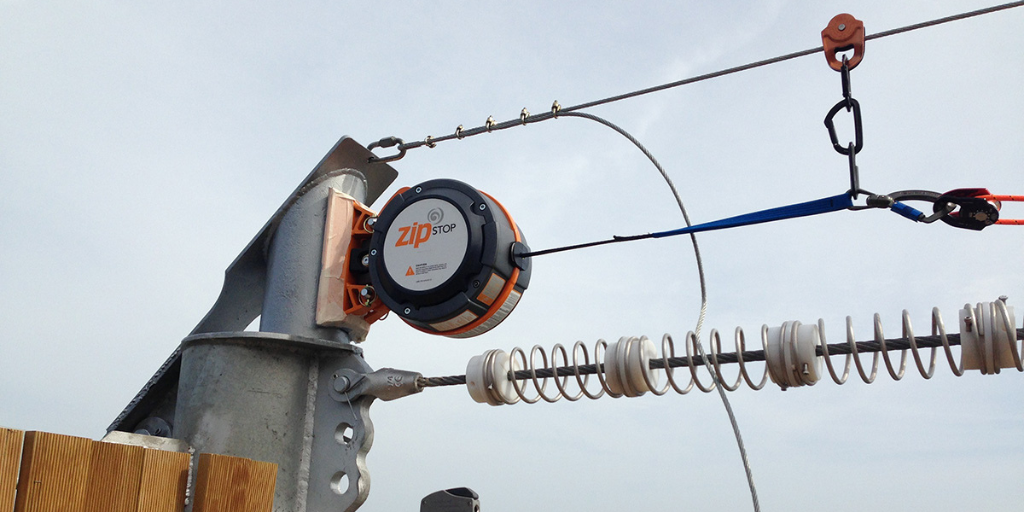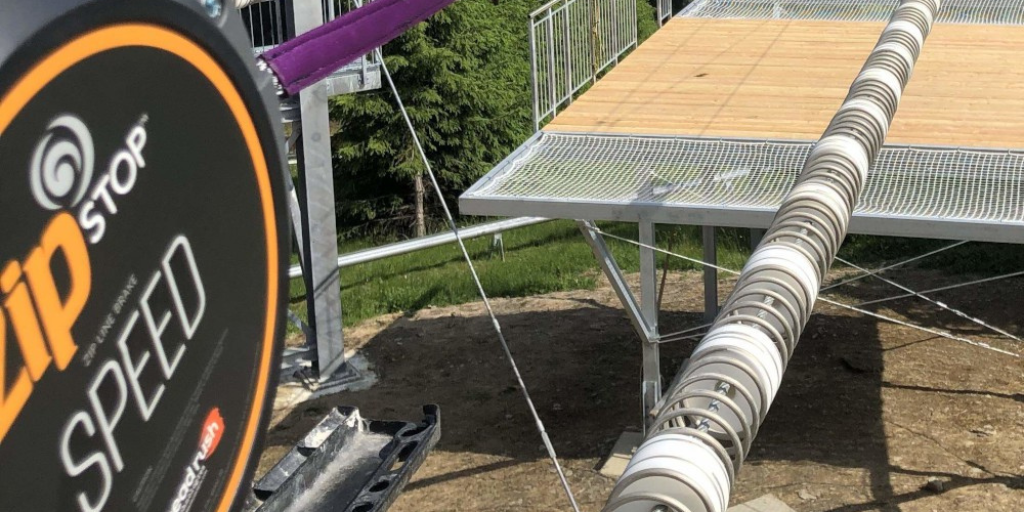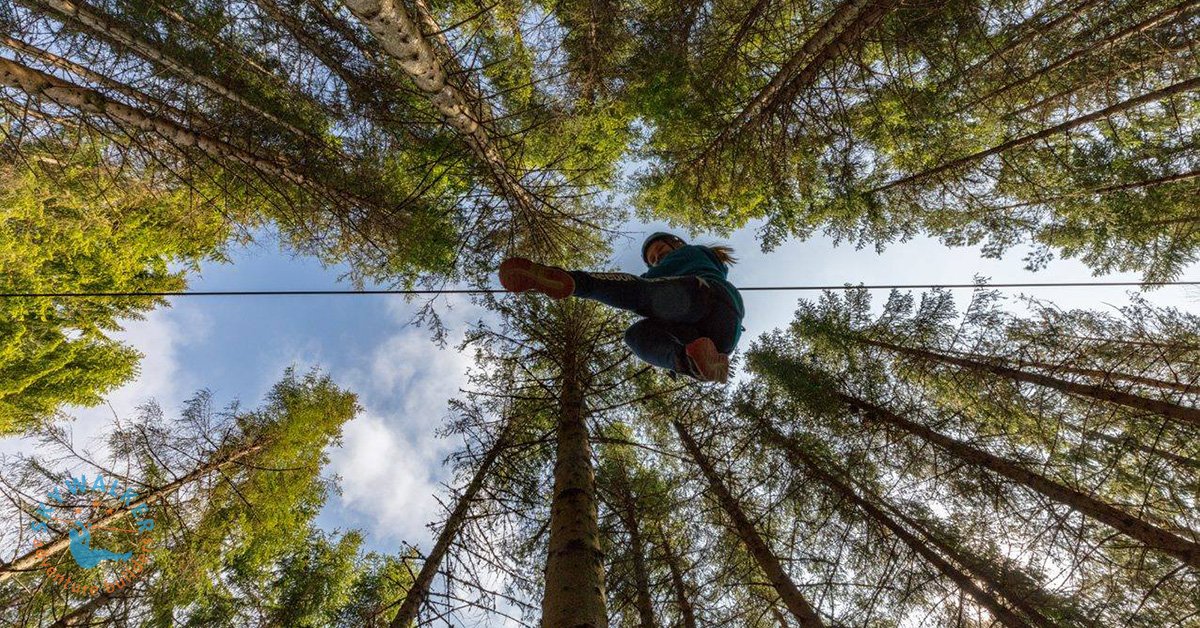Zip lining is like flying through the trees with the wind in your hair and the world sprawling beneath you. But have you ever wondered what keeps you from zooming off into the sunset? Enter the unsung hero of the zip line world: the spring brake. In this article, we're going to dive deep into the mechanics, benefits, and considerations of zip line spring brakes. So, buckle up and get ready for a thrilling ride!
What Are Zip Line Spring Brakes?
Imagine you're in a car, and you need to stop at a red light. You press the brake pedal, and the car slows down. Zip line spring brakes work on a similar principle but with a twist. They're designed to absorb the momentum of a speeding rider, ensuring a smooth and safe stop. These brakes use large metal coils that compress upon impact, much like a spring-loaded cushion.
How Do Spring Brakes Work?
Have you ever played with a slinky? That's essentially how spring brakes function. As you approach the end of the zipline, the spring brake compresses, absorbing your kinetic energy. Once you've come to a halt, the spring gently decompresses, nudging you backward for a soft landing. It's like a gentle push from a friend, ensuring you don't overshoot your mark.
The Science Behind the Springs
Let's get a bit technical, shall we? The magic of spring brakes lies in their ability to convert kinetic energy into potential energy. When you hit the brake, your speed compresses the spring, storing energy. This stored energy is then released as the spring decompresses, ensuring a controlled stop. It's a delicate dance between physics and engineering.
Benefits of Using Spring Brakes in Zip Lines
Why are spring brakes the go-to choice for many zip wire operators? For starters, they offer unparalleled safety. Acting as both primary and secondary braking systems, they ensure that riders of all weights and speeds can stop smoothly. Plus, their durability means less maintenance and more fun. Think of them as the reliable friend who's always got your back.
Enhancing the Zip Line Experience
Picture this: you're zipping through the air, heart racing, and then you come to a screeching halt. Not fun, right? Zipwire spring brakes ensure that your ride ends as smoothly as it began, enhancing the overall experience. It's like the perfect ending to a thrilling movie, leaving you wanting more.
Key Considerations for Zip wire Operators
Operating a zip line isn't just about setting up cables and harnesses. There are crucial considerations, especially when it comes to zipline spring brakes. Space is a biggie; these systems need ample room for installation. Regular inspections are also vital to ensure springs are in top-notch condition. After all, safety should always be the top priority.
The Role of Spring Brakes in Emergency Situations
Think of spring brakes as the airbags of the zip line world. While they're not the primary stopping mechanism, they play a crucial role in emergencies. If a rider comes in too hot, the spring brake acts as a safety net, ensuring a controlled stop. It's peace of mind for both operators and adventurers.
Comparing Spring Brakes to Other Braking Systems
How do Zip Wire spring brakes stack up against other systems? While magnetic and friction brakes have their merits, spring brakes offer a unique blend of safety and simplicity. They're like the Swiss Army knife of braking systems, versatile and reliable. Plus, their low maintenance makes them a favorite among operators.
Installing and Maintaining Spring Brakes
Installation might sound daunting, but with the right tools and expertise, it's a breeze. Think of it as assembling a giant puzzle, where every piece has its place. Once installed, regular maintenance checks ensure longevity and performance. It's like taking your car for a routine check-up, ensuring everything runs smoothly.
Conclusion: The Future of Zip Line Safety
Ziplining is all about adventure, but safety should never take a backseat. Zip Line Spring brakes are revolutionizing the industry, offering a blend of safety, efficiency, and thrill. As technology advances, who knows what innovations lie ahead? One thing's for sure: with spring brakes, the future looks bright and exciting.
FAQs
1. What makes spring brakes different from other braking systems?
Spring brakes use compression and decompression to absorb momentum, offering a smooth stop. They're durable and require minimal maintenance compared to other systems.
2. How often should spring brakes be inspected?
Regular inspections are recommended, ideally before the start of each season and periodically throughout, to ensure optimal performance and safety.
3. Can spring brakes handle all rider weights?
Yes, spring brakes are designed to accommodate a wide range of rider weights, ensuring a safe stop for everyone.
4. Are spring brakes suitable for all zipline setups?
While versatile, spring brakes require ample space for installation, making them more suitable for setups with sufficient platform area.
5. What happens if a spring brake fails?
In the rare event of a failure, other braking systems or emergency measures should be in place to ensure rider safety. Regular maintenance minimizes this risk.
Planning a zipline installation? Need expert advice on zipline design?
Get started Today
Additional expert Information regarding Zipline technology
Interested to read more about Zipline technology and expert opinions?
- The Power of Zip Line Simulation Software
- Bi-Directional Zip Line Technology
- Zip Line Design: Components for a Complete System
- How a Zipline Feasibility Study Guarantees Success
- MAG Brake Trolley, the Magnetic Self-braking Zipline pulley
- Professional Zipline Engineering & Design services
- How to Launch a Zip Line Company
- The Science of Zipline Design and Engineering
- Zipline Mistakes You Don’t Know You’re Making
- Key elements: Zipline Design and Engineering
- Thinking of investing and operating a Zipline?
- Zipline Emergency Arrest Devices (EADs)
- The ZipCoaster - Fly through the air, dipping and twisting
- Pros and Cons of Different Zip Line Brakes
- Expert Tips for Zip Line Brake Installations
- Thinking of investing and operating a Zipline?
- Ingenious inventions. The curvy zip line















